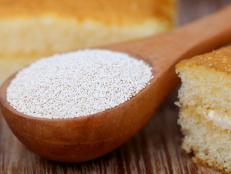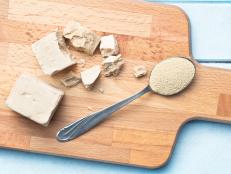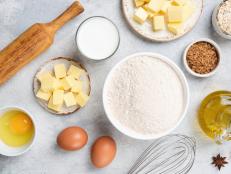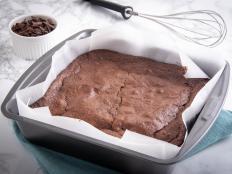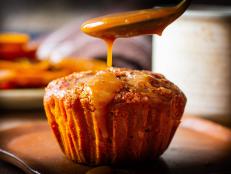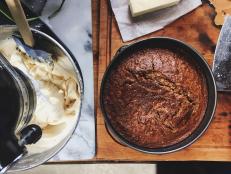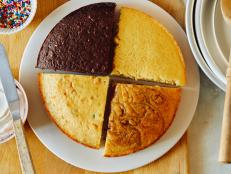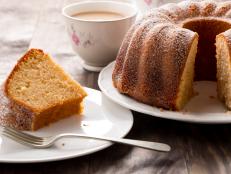10 Things I've Learned After a Year of Making Sourdough Bread
Bread-making is all about starting with a recipe — and then learning to watch, listen and adapt.

mixetto/Getty
Although I have been baking bread for years, 2020 granted me the opportunity to get up close and personal with my loaves in a different way. I panic-bought 50 pounds of flour, stayed home and baked out of both anxiety and necessity. I made some great bread and some not-so great bread and ate all of the mistakes anyway. It’s been quite a journey — on which I’m not sure you ever reach the destination. As a traveler along this road, here are ten things I learned along the way.
1. Sourdough starters are easily grown.
It not may feel like it, but sourdough starter is not a mystical creature that you encounter once in a lifetime, and just because a starter is 100 years old doesn’t necessarily mean it’s any better than one you grew last week (although the 100 year-old starter is very romantic and I am a sucker for romance). Don’t fret if you kill yours, you can grow another one.
If you have been maintaining a starter already, you probably have lots of yeasts in the air around your kitchen that will help grow another even quicker. If it is your first time, and you just can’t get it to grow, it’s possible your water is the culprit — you might have high chlorine levels. So try distilled water or a simple pitcher filter system. There are also plenty of people out there who would love to give you some of their starter.
Starting (ha) from scratch? Here's how to make a starter.

Matt Armendariz
2. Use your starter at its peak.
When baking sourdough bread, it’s important that your starter is strong and active. If it’s been dormant in the refrigerator, pull it out and give it a few feeds at room temperature so it starts rising and falling within the course of a day. Use your starter when it peaks (meaning it has risen it’s highest) or right after (when you see it starts to fall) for best results. A good way to know if your starter is ready is to drop a spoonful into a glass of warm water. If it floats, you are good to go.
3. Sourdough doesn’t always mean sour.
I used to think that sourdough always had to be sour. It’s true that there are delicious styles of bread that are, but sourdough baking can also be sweet or subtle, letting the flavor of the grains shine through. Some of my favorite bakes this year were nutty sandwich pan-loaves that tasted like cinnamon from the character of the whole wheat flour, and sweet buttery cinnamon buns.
4. The recipe is only half the battle.
With most baking recipes like cakes and cookies, the recipe is fairly precise. Sure, there are factors that will influence the outcome, but there are much less of them than if you were making something like fresh pasta or bread. The environment has so much to do with the outcome. A pasta dough made in a damp restaurant kitchen basement will need more flour than one made in a dry, air-conditioned room. Bread is similar in that way — a very humid day is going to cause your dough to be wetter than on a dry day. In the summer, you might find your bread overproofs in record time, and in the winter, your house might feel warm but the bread is taking forever.
The brand of flour and how the flour has been stored can also affect the dough. Protein contents and fineness of grind vary brand-to-brand, so they absorb water differently. And flour that was stored in a porous paper bag in a very humid environment might take less water than one stored in an airtight container. Fresher flour will generally be more active than older flour.
That's why bread making is somewhat an art — you have to read the dough and adjust accordingly. If your dough feels drier than usual add a tablespoon of water. If the dough doesn’t look like it’s proofing after many hours, keep going. Think of the time as a guideline, but follow the recipe’s visual cues.
5. But the recipe is still important.
I know — hello, mixed signals! It’s still important to follow a recipe. With sourdough, it can feel like there are a bunch of unimportant steps, but they might be important for that particular recipe. For instance, one recipe might call for mixing the dough up front, but another doesn’t, so you might think it isn’t necessary, but it was needed to build strength in this particular dough. Or the pre-shape step might seem like overkill, but without it your bread didn’t have enough tension for good oven spring.
6. Practice.
The only way to get better is to do it. Mistakes are great learning experiences, especially when it comes to bread. You might end up overproofing a loaf that didn’t seem to be going quick enough at first, but that experience will give you a better sense of where the boundaries are and what they feel like (literally).
7. A messed-up loaf will usually make a good focaccia.
Sometimes when you are making a loaf you will realize something doesn’t feel right. It will just be too wet, or slack and have no structure. You may have mismeasured (I do this more than I care to admit), or your day caused you to forget about the dough, or you missed a step. When this happens, I pour a generous amount of olive oil in a cake pan that seems like the right size, dump the bread in, and proof until it’s bubby. Then poke dimples in it, sprinkle with salt and bake it. Some of my best focaccia loaves were from instances like this!
8. You can reuse your parchment.
I bake boules in a high-sided Dutch oven and I like to turn my proofed dough out onto a sheet of parchment before lowering it into the scalding hot vessel. You can save the parchment after baking and reuse it many times. I store mine right in the Dutch oven so it’s always there when I need it.
9. Deflect heat to prevent the bottom from burning.
If your loaves are burning on the bottom it could be that your oven heats too intensely from the bottom. Put a pizza stone or cast-iron griddle or skillet on the bottom shelf to absorb that heat.

Matt, Matt, Matt
10. Use your "discard."
I feed my starter often, so I often have some that would ordinarily need discarding, if I'm not going to make bread with it that day. (If you don't discard, you'll eventually end up with an exponentially growing starter.) I'm always trying to figure out ways to use the "discard," and some ideas are met with more enthusiasm than others around my house. Since chocolate chip cookies never get tired in this family, I made these. So far not a single complaint, and so it seems that this may be one place where I have actually arrived.

























